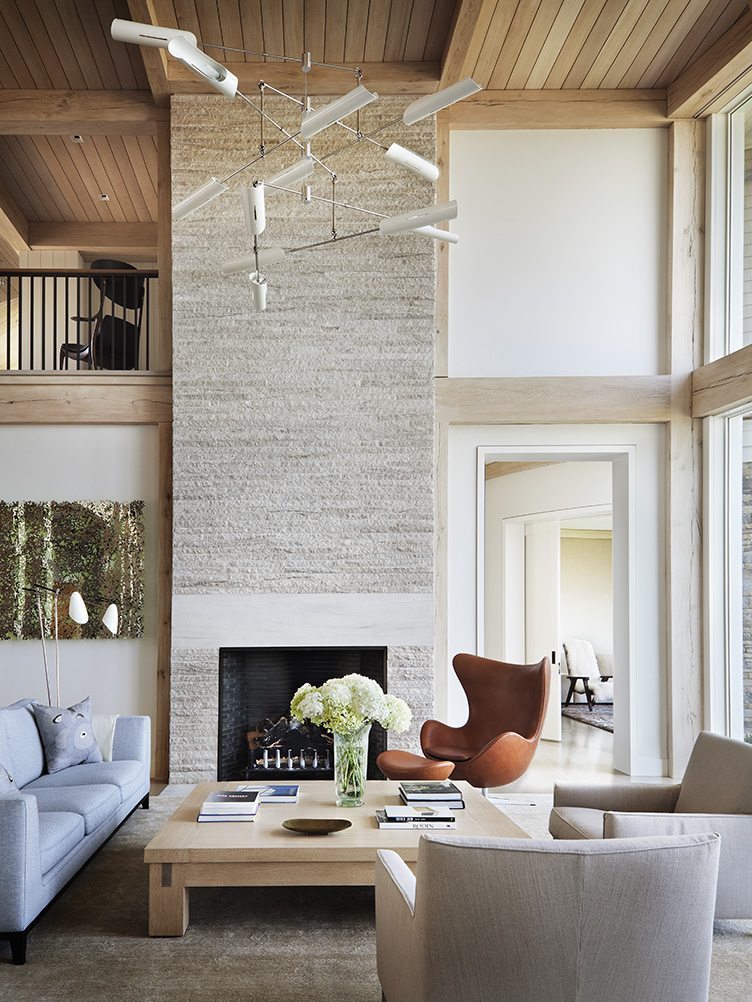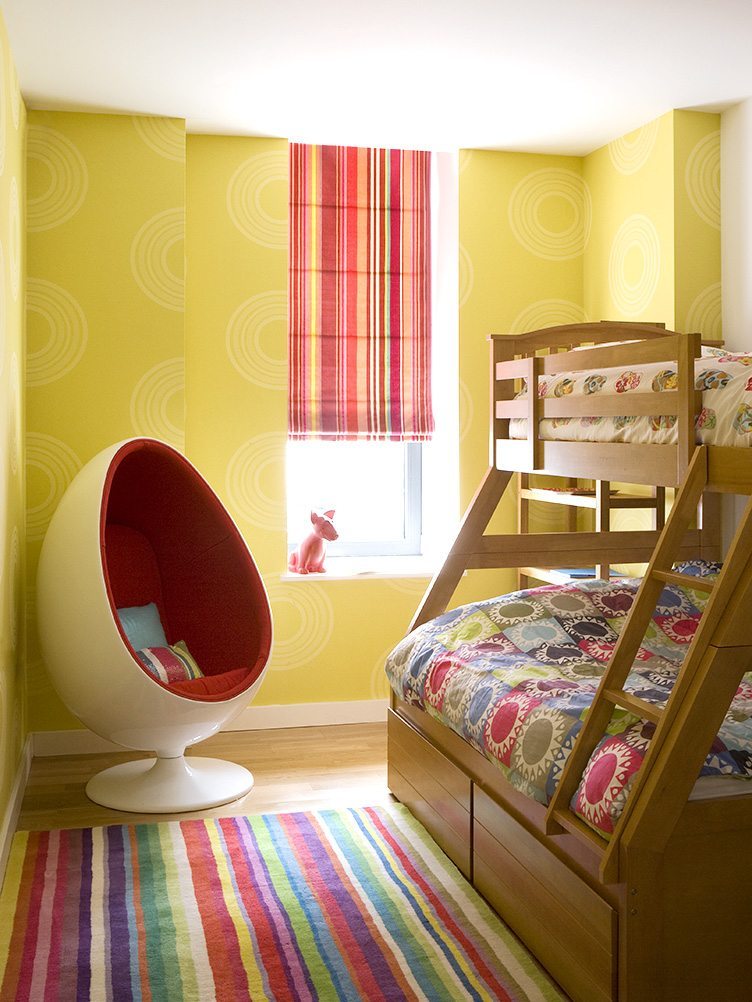Cradling, womb-like, and insanely sculptural, nothing tops the ingenuity of the famous Egg chair. In the 1960s, an Egg chair craze took hold of the design world thanks to Danish designer Arne Jacobsen. In 1958, Jacobsen created the official Egg chair, a masterful pairing of form and function. An instant classic, Jacobsen’s design enticed with its promise of cocooning comfort, while its quirkiness implored emulation.
Of the chairs that followed, some were egg-shaped, but others were curiously ‘hard-shelled,’ leading one to wonder: what exactly is an egg chair? To de-mystify the befuddling reference, we’re shining a spotlight on Jacobsen’s original design and highlighting the best egg-inspired chairs that followed. To learn more, read on!

Arne Jacobsen’s Egg Chair
Originally designed for the lobby of the insanely posh SAS Royal Hotel Copenhagen hotel, the aim of Jacobsen’s original design was to carve out personal space in a very public setting (kind of like a super chic study corral). Featuring undulating contours, the foam-based Egg chair was considered revolutionary in an era when most designers were mostly experimenting with tubular metals. Whether cloaked in polyester or sumptuous leather, the Egg chair is an indisputable masterpiece.
Why We Love It: With high, wingback-like sides and a cradling seat, the Egg chair speaks to our most introverted desires—to curl up in headphones and pass a few hours in a blissful cocoon. Whether you fancy yourself the life of the party or not, let’s face it, we can all use an adult time-out every now and then. The Egg chair offers just that in a design package that is truly timeless.
How to Use It: With enough sculptural integrity to warrant it a statement piece in any room, Jacobsen’s Egg chair works in both traditional and contemporary interiors. With that said, to ensure it doesn’t feel a tangent in a traditional interior, choose one in a fabric that’s similar in color to your other furniture—it’ll make all the difference.
Shop Egg Chairs

Eero Aarnio’s Ball Chair
Designed by Finnish designer Eero Aarnio for his own home, the 1966 Ball chair obviously isn’t an egg shape, but does have a shell, leading to its frequent classification as an egg chair. Likewise, the Ball chair embraces the egg chair’s pea-in-a-pod mentality, as it works to not just seat the occupant, but encapsulate them. Designed using fiberglass and aluminum, the original Ball chair was based on Aarnio’s realization that chairs had become so simplistic, they could essentially be rendered as a sphere.
Why We Love It: The Ball chair doesn’t just seat you, it hides you, making it perfect for reconnecting with your inner introvert. Eero Aarnio boldly described the chair as “room within a room,” and we have to agree, that’s exactly what this sweet little mod pod is.
How to Use It: There’s no two ways to dice it, Ball chairs aren’t for those who consider themselves risk-adverse. If you love the look of a Ball chair, but are a little less than confident about plunking a hard-shelled sphere in the middle of your living room, try opting for a kid’s size one in a playroom or bedroom. Equal parts functional and playful, a Ball chair is just right for revving up wee ones’ imaginative powers.
Shop Ball Chairs

Eero Aarnio’s Bubble Chair
While officially known as the Bubble chair, tap out the words “Egg Chair” in to any search bar and few of these bad boys are bound to pop up. Following the creation of his famed Ball chair, Eero Aarnio desired a version of the chair that was more easily penetrated by light. His quest led him to designing a translucent ball made out of skylight acrylic. When Aarnio failed to locate a rotating base that would add to the chair’s ethereal effect, he decided to hang the chair from the ceiling. How perfect was that call?
Why We Love It: Now a staple of Space Age design, the beauty of the Bubble chair is that is it allows the occupant to view the outside world while remaining ear-muffed to the accompanying noise. Plus, it floats. If that doesn’t sound Zen-like, we don’t know what does.
How to Use It: Being that it’s translucent, the Bubble chair is perfect for layering in front of a wall of windows or bank of patio doors. There’s also no reason a Bubble chair can’t be factored into a living room’s conversation pit. Hung perpendicular to a sofa a Bubble chair can look like a total chic attack. Just remember to carefully consider symmetry when designing a room with a Bubble chair, and don’t forget: sometimes two Bubble chairs is better than one!

Nana & Jørgen Ditzel’s Hanging Egg Chair
By the time they introduced their Hanging Egg chair in 1959, Danish designers Nanna and Jørgen Ditzel were already well-schooled in the art of egg chairs. The Hanging Egg chair’s 1951 predecessor, the Rana Chair, was composed of a wicker egg shell reclined on a three-legged base. Borrowing from the Rana’s single-piece shell design, the duo’s Hanging Egg chair features a similar form but is intended to be strung from the rafters, adding what was, at that time, an on-trend element of movement.
Why We Love It: There’s something just so ‘70s bohemian about passing the hours in an chair made out of golden, sun-warmed rattan. The perfect marriage of minimalism and romanticism, the Hanging Egg chair is made for back patio sipping or garden daydreaming. Just imagine soaking in the fading summer light in this baby, book in hand.
How to Use It: Covered patios and poolside verandas are shoo-ins for a Hanging Egg Chair, but we’re also major fans of stringing one up in a secluded bedroom or living room corner. Partnered up with a snappy pouf and delicious knit throw, you’ve curated the ultimate boho hideaway with bare bones effort.

Get to Know: Arne Jacobsen (1902-1971)
Hometown: Copenhagen, Denmark
His dream job… A painter (It was actually Arne’s father who encouraged him to study architecture).
His actual job… Architect and designer. He was also a professor at the Royal Danish Academy of Fine Arts, School of Architecture in Copenhagen, where he originally studied.
On his inspiration board… A swan, an ant, and a single water droplet. During the course of his career, Arne designed chairs that paid homage to all of these quirky forms and named the designs accordingly.
Shop More Egg-Inspired Chairs
Lead photo courtesy of Charlotte Lucas












